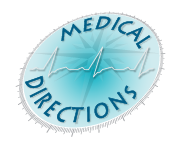Recently we were at a practice where they have two patients who are married and both have the same first and last name. The receptionist didn’t ask the female patient’s date of birth when she presented to reception and as a result the doctor had the male’s health record on the screen instead of the female patient’s – as you can imagine, this caused a lot of confusion when the patient requested a repeat script for medication that hadn’t been prescribed previously!
Approved patient identifiers include the following patient details:
- Name (family and given names together are one identifier)
- Date of birth
- Gender (as identified by the patient)
- Address
- Patient health record number where it exists
- Individual Healthcare Identifier
Correct patient identification is necessary when:
- a patient makes an appointment
- a patient presents to the practice for their appointment
- you communicate with a patient over the telephone or electronically
- a patient telephones asking for a repeat of a prescription
- a patient sees more than one practitioner during a visit
- a patient record is accessed
- you collect and manage information (e.g. scanned documents, x-rays) about a patient
Note: A patient’s Medicare number is not an approved patient identifier.
Reference: Criterion C6.1 – Patient Identification